After visiting two of HOLT’s projects in Roehampton, Icon’s CEO, Emma Jhita, talks to Nicola about the importance of engaging communities and young people in heritage projects.
Emma: Thank you so much for taking me to the Fred Millett Mural at Alton Community Hall, which is undergoing investigation before conservation work gets under way, and the recently restored Grade II*-listed sculpture Bull, by Robert Clatworthy. What incredible, if very different, artefacts! Just to provide some background for Icon’s members, the Heritage of London Trust – or HOLT for short – was established in 1980 to rescue historic buildings and monuments. Can you tell us about HOLT’s work today and its focus on heritage in communities?
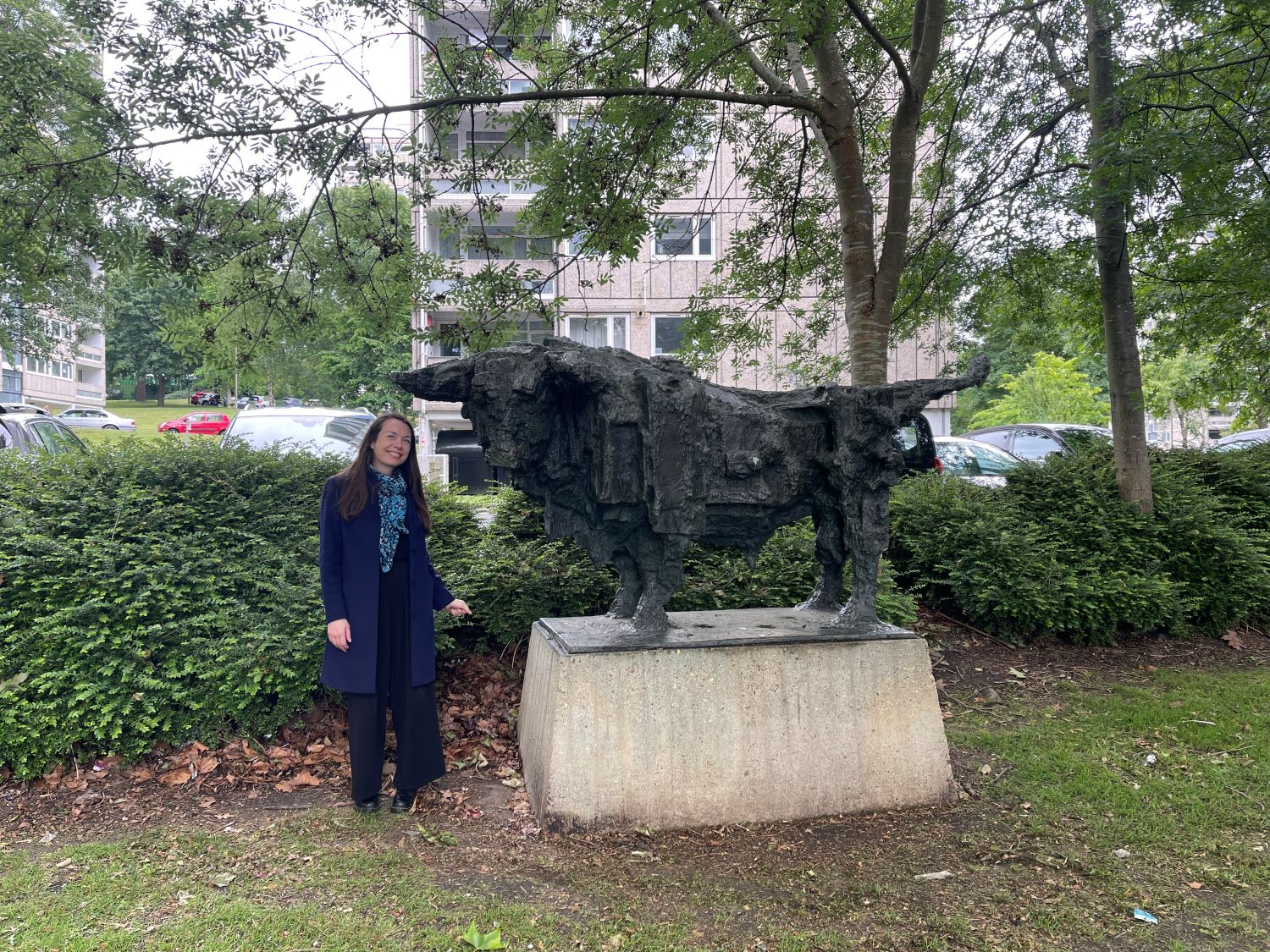
Icon CEO, Emma Jhita by the Grade II-listed sculpture Bull, by Robert Clatworthy
Nicola: HOLT was born out of the Greater London Council and its aims were really similar to what we’re doing today. It always intended to raise awareness, to care for and restore our heritage for future generations to enjoy, and to help everyone appreciate and have better access to the heritage that surrounds them. The only difference is that we’re now more proactive with the community and education work.
Emma: Great! Prioritising a focus on community engagement really secures a legacy for heritage, doesn’t it?
Nicola: Yes, I don’t think anyone should be delivering a heritage project without involving young people, because that’s the only way it’s sustainable. You have to deliver a project so that it’s memorable to young people and they’ll then become its future champions.
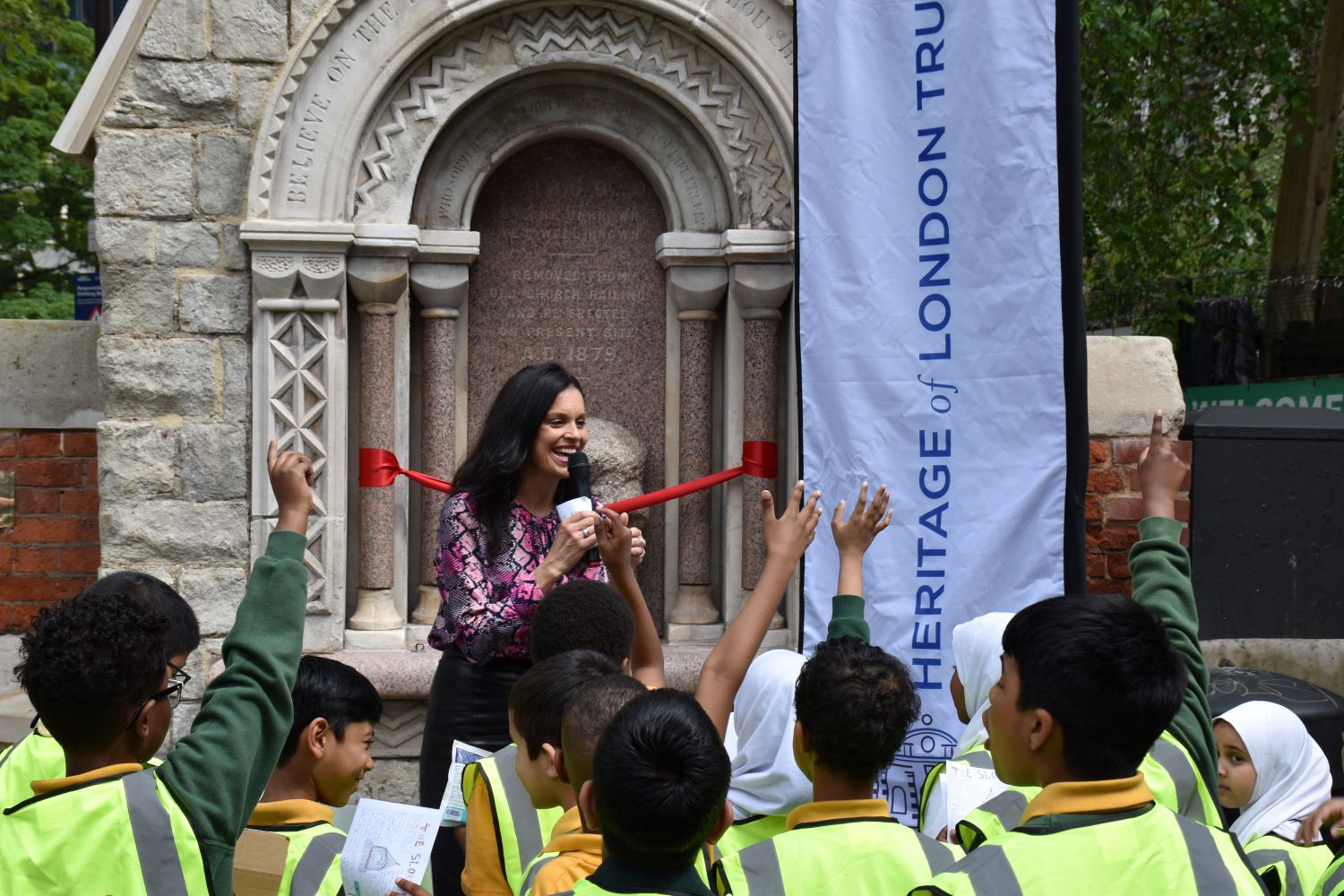
Dr Nicola Stacey speaking at a project launch
Emma: Definitely. And I think people want to engage in different ways, don’t they? Being able to talk about the history of something, to talk about the artist, reference the material an object is made from. Nicola: Yes, it’s on so many levels, but I like to think of it as the Museum of London out in the city. These sites represent the whole history of London. And to have that on your doorstep – these sites become places that you're familiar with. They become part of your domestic landscape, and you then develop a sense of affection and pride, and community cohesion in a broader sense.
Emma: So, I suppose one of the key aspects is that continued focus within communities and the value that HOLT contributes.
Nicola: Yes. For every project, we have a community launch, where neighbours who may not really know each other come together for the celebration. I think it makes heritage incredibly accessible. There are wonderful, wonderful museums and galleries around the city and country. Nonetheless, it does require you to be confident enough to go to those museums and galleries – to feel that they are for you.
At our projects, we always encourage the conservators to engage with the local community as they’re working. So, if somebody stops, they’ll talk about what they’re doing and invite them to the launch if they want to know more. We had an amazing project in Haringey, which was the restoration of an old Victorian fountain outside a pub. An elderly woman came past to say that her grandfather had owned the pub and, when she was little and the circus came to town, the elephants would drink from the fountain. You’d never get that kind of story if you didn’t listen to someone walking past. It is their stories, their lives, their experiences. We are doing it for them and to deliver projects that are so much richer in the end.
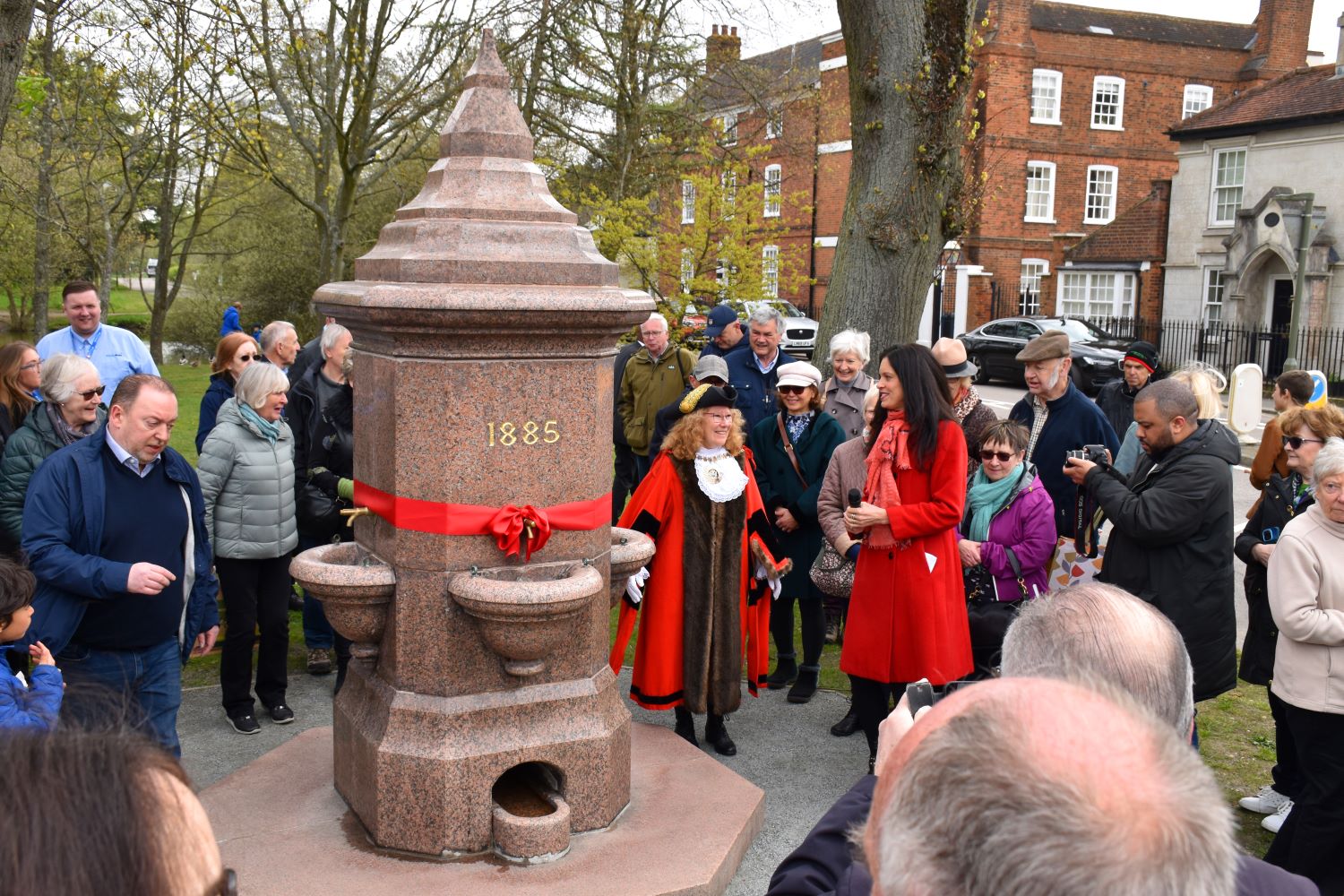
Communities are brought together to celebrate all of the projects supported by HOLT, post-restoration
Emma: Wonderful! Discovering the heritage embedded within the community that you’re working with. For the members of that community, being encouraged to see their environment in a different way, to look afresh and engage differently?
Nicola: Yes, exactly. The sort of ‘hidden in plain sight’ aspect. But also to show that everybody’s coming from across London to restore something in their area because it’s of value, interest and significance – they become instantly prouder of it.
Emma: One of the things we’ve touched on when visiting the projects is the sense that all these objects have connections through their histories, communities and materials. That must be incredibly powerful, for the people who live locally, but also for people who have no connection with the area, to recognise that a place’s heritage puts it on the map?
Nicola: Definitely. There’s been a sense that you have to find the heritage that connects to people’s personal histories, but local people will feel just as proud of a 19th-century heritage site if you explain its history and stories. We work with groups of young refugees and they really engage with the sites because they are learning about the history of the country they have come to and gaining more confidence. On a practical level, a lot of them have come from families of craftspeople, so they can make that connection to the beautiful stonework on their site and feel really proud of their own family’s heritage. When they call back home, they’ve got stories to share – they talk about visits they’ve been on and that they’ve had an exciting time making new contacts, because, often, they’re just so isolated. It’s an unbelievable win.
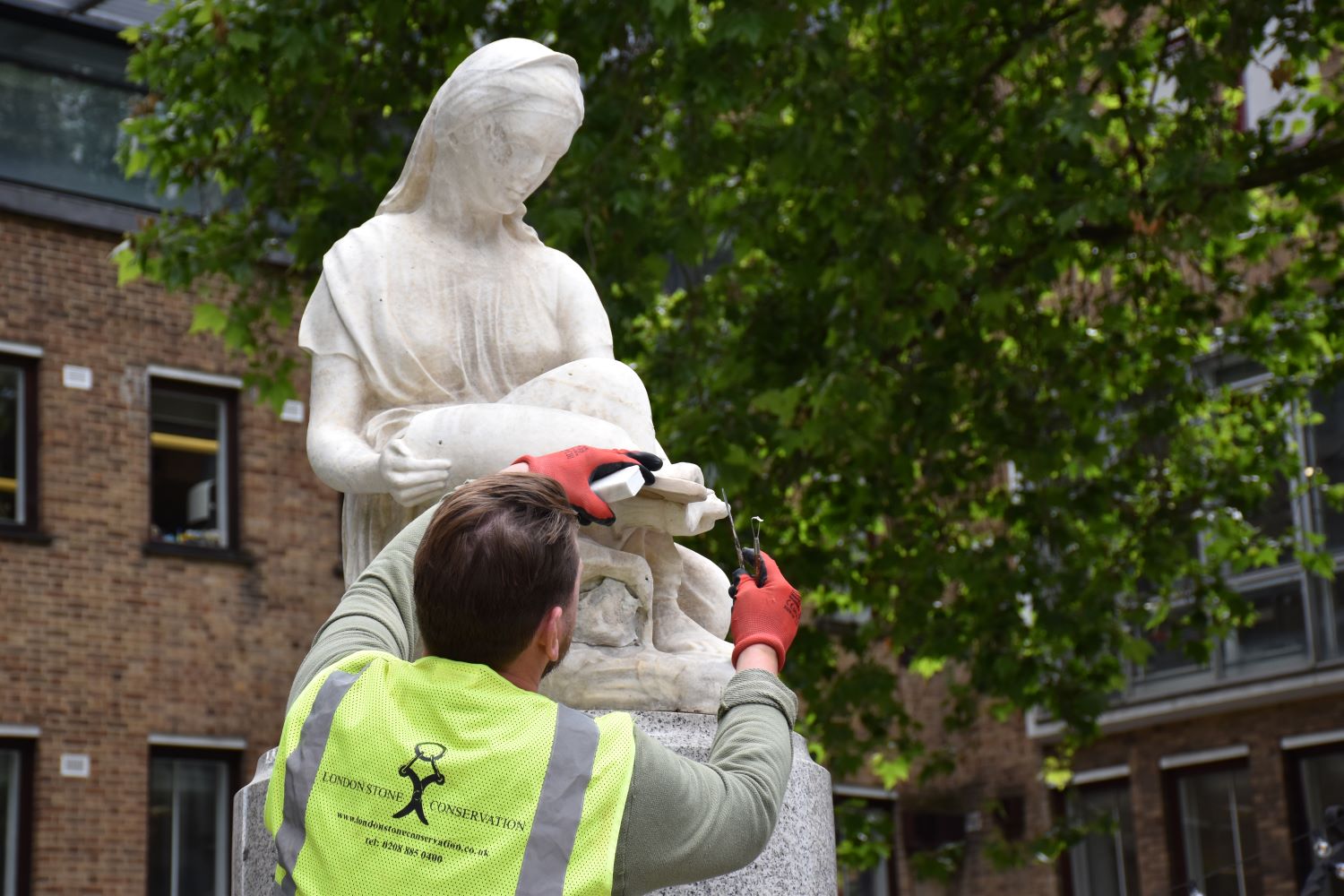
Conservation work being carried out on Guildford Place Fountain
Emma: That’s amazing. And I suppose there will always be parallels to be found. I love the fact that the Fred Millett mural we’ve just visited has that connection with the Festival of Britain and the London County Council’s (LCC’s) post-war Patronage of the Arts scheme.
Nicola: Yes, the scheme was this very utopian vision to create public art in residential areas and in schools. Many of these are now in disrepair because they’re more than 60 years old. The name of the artist is often lost and they’re generally quite neglected. So, we’re doing everything from murals, as you’ve just seen, to sculpture and mosaics – an amazing variety. The LCC’s investment was to create places that would be inspirational to families, so the themes of these artworks are quite wholesome – family, work, play, sport. Because these are often incredible pieces of artwork, we’re sometimes asked, “wouldn’t it be safer in a museum or gallery?” And we are absolutely insistent – no, it was designed to be in a public space.
Of course, London’s constantly evolving, but it’s important that students in a school, or residents on an estate, can access these sites. It was a very optimistic period when these pieces were created, and there was a real holistic view about how London was developing and what society needed after the war. It’s so fragmented now, and there’s a lot of short-sightedness in how developments are going up and in planning decisions being made. I’m excited our work is now shining a light on the value of these sites in their communities and for developers. I really do hope that it’s going to encourage some ambitious artworks.
Emma: And do you feel that the passion of the communities you work with and the ambition of the young people in the Proud Places programme will advocate for that, and help drive this vision forward?
Nicola: Yes, we’ve had such amazing young people come through the programme. It’s all about inspiring children, from the age of 11 up, with the world around them – telling them the hidden stories of London and why these matter through involvement in local heritage projects.
One of our Proud Places Ambassadors went to speak about the programme at the House of Lords recently, and the positive impact that it had on her, and her understanding of place. The programme really gives people fresh eyes on London. For example, we’ve had some young people who now want to be documentary filmmakers because they feel more confident about cultural sites and weaving in the histories with contemporary life in that way.
Emma: And I suppose, with that confidence, the passion to share those stories and champion the things they believe in.
Nicola: Yes. At every project launch we always have a young person cut the ribbon and make a speech. They are the future of these sites, and I want them to be front and centre of it all.
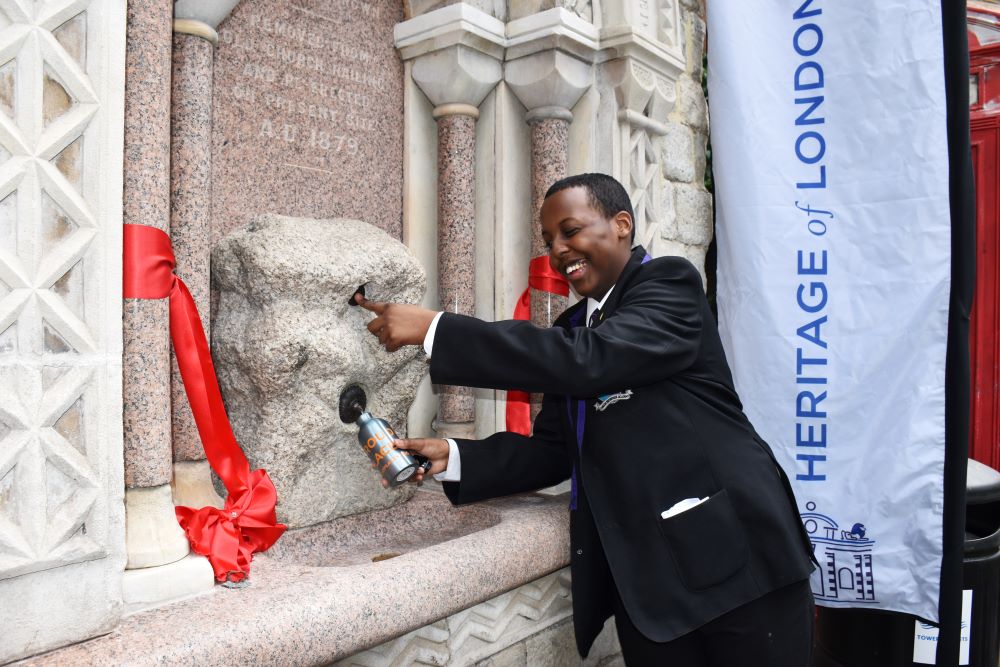
A young person cuts the ribbon at the launch of Whitechapel Fountain and fills their water bottle
Emma: That’s brilliant. And I understand Proud Places has been running for five years in October. How did it all start?
Nicola: I’d delivered similar programmes and worked with the public in other roles I’d had in the heritage sector. So, I’ve always been passionate about that. Then, when I started at HOLT, we were doing amazing projects – it was such a great opportunity to engage young people. We started with pilot projects and just saw the enthusiasm young people had. I was determined from the beginning to have a well-funded programme that was sustainable, with a dedicated team delivering this activity.
We secured funding in February 2020, just before the pandemic hit. Rather than postpone, we decided to get going immediately, so we did more pilot work in summer 2020 and then launched in October, at which point schools all went into lockdown again. So, we worked with organisations looking after more vulnerable children, who were in alternative provision. Throughout that autumn we saw the incredible impact it was having on these young people – the enthusiasm, the sense of adventure and being outdoors; the sense of place and pride and confidence. It was so exciting. As a result of that experience, we now work with alternative provision schools – pupil referral units – plus mainstream primary and secondary schools, refugees and youth groups. The alternative schools often have amazing teachers and leaders, but just don’t have the same kind of cultural opportunities we’re offering them.
Emma: And then bringing in specialist skills – of conservators, for example. Presumably this contributes to a real sense of investment in place and generates local pride?
Nicola: Yes, exactly. To actually see the challenges of the process, because it’s kind of a mystery – how do you get from X to Y? They get to see exactly what the stonemasons are doing. When they’re restoring a historic fountain, usually you have to take it to pieces to put all the new plumbing in and they learn how you match-in stone sections, how you match the mortars. We will restore inscriptions, if they’re totally lost and illegible, because we do feel part of the significance of the site is the dedication. In that sense, we are quite interventive, but within a general conservation philosophy that these sites must be respected entirely. And we take the young people through the whole process of the decisions we make in order to restore a site. They enjoy getting involved in the interpretation and contributing ideas more broadly around why we are restoring it – and they often have ideas that we haven’t had, which is great.
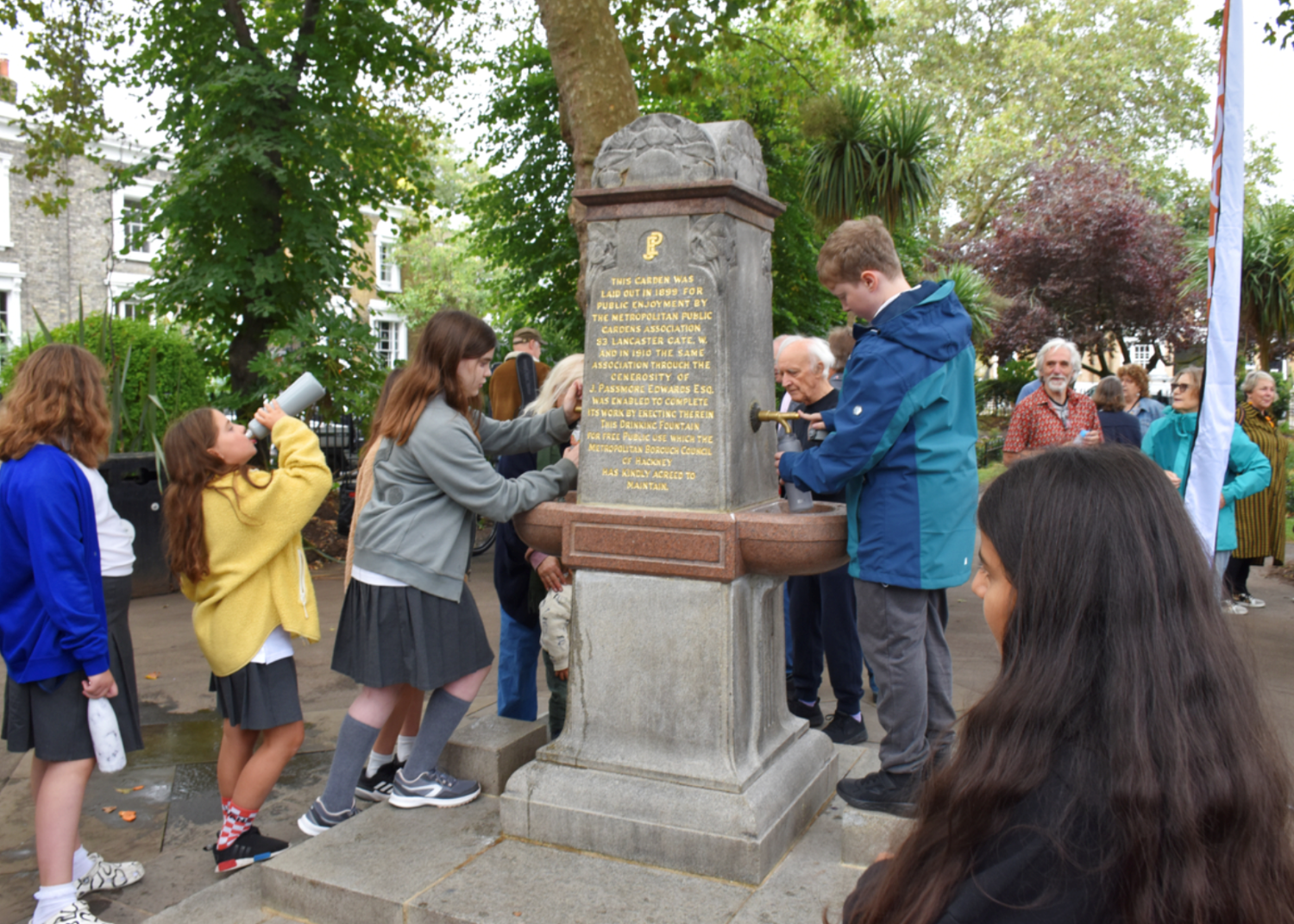
Local school children draw water from the restored fountain in Albion Square, Hackney
Emma: Your website says that more than 8,500 young people have taken part in Proud Places since 2020, which is amazing.
Nicola: Yes. It’s well over that now and they often come to us in small groups of four or five. The Proud Places team members are fantastic – they are determined, patient, creative and thoughtful. When I recruit into the Proud Places team, I always have young people on the interview panel. It’s a really important indication of how passionate someone is about young people. We genuinely see their energy for working with and being inspired by them.
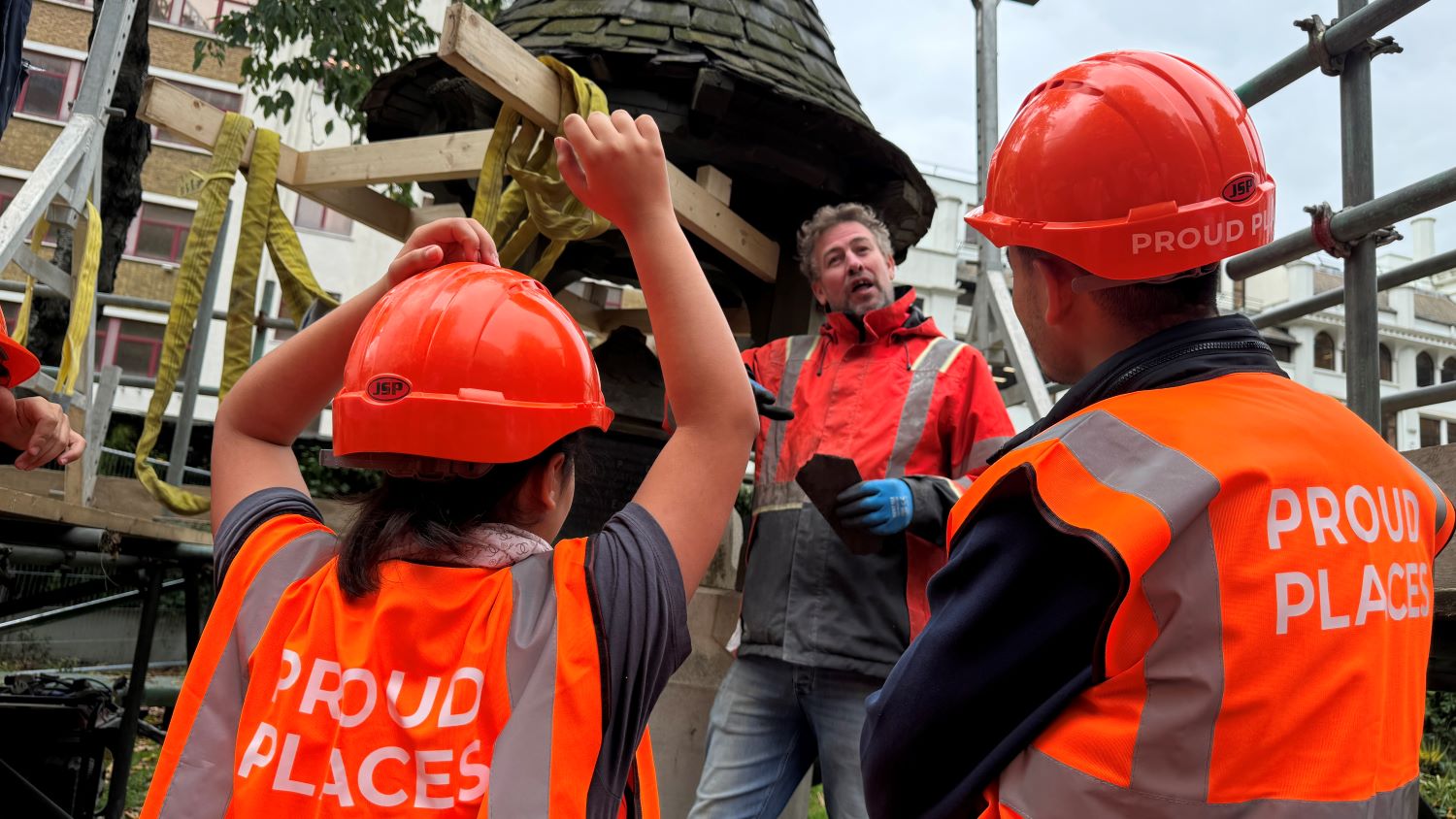
HOLT engages young people in all of its projects to help ensure they become future champions
Emma: That sounds amazing; what a great programme. Just one final question – what do you hope will be the enduring legacy of HOLT’s work, and specifically Proud Places?
Nicola: I would like to have made a difference in making the heritage sector more diverse. It has historically been very un-diverse – not for the lack of will, but just failing to break through the barriers to reach young people who haven’t had any natural previous engagement with heritage. I would really like to see that we’ve shown the way in that, and encouraged London and its most diverse communities to be interested in heritage, and London’s history and culture more broadly. I would like to inspire other organisations to be bold, creative, confident and ambitious in their outreach work. For people to cherish, and step in to restore and champion their local heritage, and to see the opportunities.
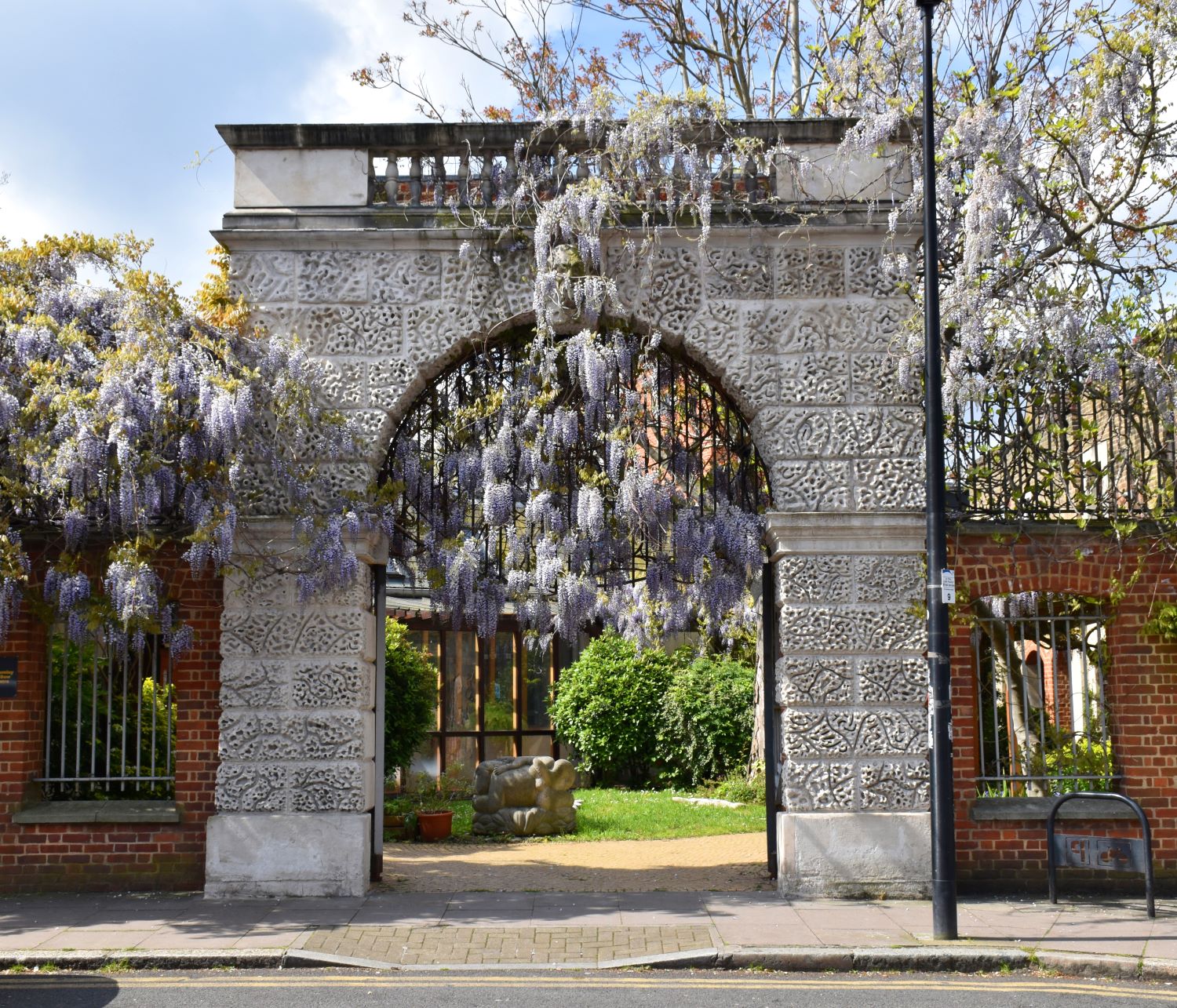
Northumberland House Arch with wisteria, one of HOLT's many projects across the city of London
Emma: Amazing. Lots of that is about shining a light, isn’t it? It’s about advocating, celebrating and sharing, so that the ripples of your work are really reaching new audiences.
Nicola: Absolutely. Engaging the broadest possible audience. That kind of grassroots London is what I’m fascinated by. Getting people to realise the pleasures and rewards of doing it. That it has a huge, broad impact into the future, with future generations. I just think let’s lift up heritage. Make it fun!
Emma: Amazing. What an inspiring message. Thank you so much, Nicola. It’s been great talking with you. Nicola: Lovely talking to you. Thank you.
To learn more about the Heritage of London Trust (HOLT), visit their website at www.heritageoflondon.org.
